The content of the article
Cats by their nature are extremely clean, but they also need to clean their ears because they cannot do this on their own. Mother often licks little kittens with auricles, but only a person can provide thorough care with the use of special means.
In addition to removing contaminants, pets need to deal with ear mites and accumulated moisture. The procedure is painless when care is carried out regularly. Pet is taught to clean the ears from childhood, so that in the future there will be no problems.
Is it possible to clean kittens ears
Owners often ask themselves this question. It is advisable to determine whether the pet of the family really needs hygienic cleaning or is it just a whim of the owner.
During the next game with the animal or its sound sleep, carefully inspect the auricle for accumulated sulfur, moisture and parasites.
The time has come. Does the pet often wave its head, dip it in a bowl of water, rubs against a carpet and other surfaces? It's time to clean the ears.
Disease. Most representatives of cat breeds suffer from inflammation of the ears, which occurs due to the abundant accumulation of water in the ear canal, the ingress of foreign bodies (branch, fabric thread, etc.) or occasional cosmetic cleaning.
A foreign object injures the eardrum, the disease is accompanied by purulent discharge and excruciating pain of the animal. In such cases, it is important to contact the veterinarian in time to keep the baby hearing.
Otodectosis (ear tick)
Ear cleaning is an important procedure for your pet’s health. Small kittens are susceptible to the disease associated with the appearance of ear mites. Parasites feed on particles of the epidermis, so they choose the ears of young animals as their habitat.
Symptoms
- itching begins;
- mass of pus;
- sulfur becomes dark in color;
- the inner ear is covered with a crust;
- the neglected stage affects the auditory canal, as a result of which the pet ceases to hear clearly;
- the animal suffers and combs its ears to the blood, wanting to get rid of the hated pests, which are visible only under a microscope.
An unvaccinated kitten can pick up an ear tick only from older relatives who regularly visit the street and are at risk.
Treatment
Early otodectosis is successfully treated with antibiotics. If even the most minor symptoms are identified, it is recommended that you visit a veterinarian for a more accurate diagnosis and degree of damage. In the clinic, the animal will be sowed or scraped, after which a course of treatment will be prescribed.
As a rule, doctors expel parasites by prescribing anti-tick drugs together with antibacterial and antifungal drops. Before direct treatment, you need to clean your ears of contaminants so that the effect of the drug extends to all damaged areas.
The course lasts about a month, during which you need to daily process the pet’s ears. It is recommended to re-visit the veterinarian to make sure the effectiveness of the procedures performed.
Important: Kittens with a weakened immune system often become infected with otodectosis. Pay attention to the feeding and general maintenance of your pet, perhaps it is time to change something.
How to clean a kitten’s ears at home
General recommendations for owners:
- A hygienic procedure is carried out after each bath, regardless of the frequency.
- As a prophylaxis, conduct a thorough daily examination of the organ of hearing of the animal.Ears are the most sensitive place for kittens, so they need proper care.
- Daily cleaning is only necessary in extreme necessity (otodectosis, constant moisture, foreign bodies). In other cases, the frequency of the procedure: every 2 weeks.
- If your pet regularly accumulates sulfur in the ear canal, remove deposits as they form.
- As a cleanser, use the ear lotion that is sold at pet stores. Klini's company has established itself well; their products contain a series for kittens.
The method of cleaning the organ of hearing in kittens directly depends on the breed of the animal, the shape of the ears and their size.
For example, sphinxes suffer from increased sulfur production, so they need a daily procedure.
Siamese, British, Scottish and Persian breeds require weekly brushing, as their ears have a coat that reduces excreta.
Procedure
Cosmetic preparations. Before you begin hygienic cleaning, read reviews on ear lotions and drops designed specifically for kittens. It is important to use only quality products to avoid complications in the future.
Prefer a natural composition without artificial additives and oils that provoke the pet to scratch its ears once again. Well, if the lotion contains silver ions, they have a beneficial effect on the ear canal.
Choose drugs with antifungal action that prevent inflammation and neoplasms, creating a protective film in the auricle.
Important features. Ear cleaning should be done carefully so as not to harm the eardrum. It is important to fix the head of the animal, otherwise the kitten will begin to spin and cause damage to its own auditory canal.
Scheduled procedure. In order to clean the deep part of the passage, use cotton swabs dipped in lotion. The movements should be smooth, move from the inside towards the outer edge, so as not to clog the passage even more.
The outer ear is cleaned with a cotton swab moistened with a mixture of hydrogen peroxide (3%) and water in a ratio of 2: 1. Please note that the peroxide will hiss in the ear of the animal, which will cause unnecessary inconvenience. This tool is used no more than twice a month, as it dries the skin greatly. Otherwise, use lotion.
Watch the reaction, if the baby breaks out, perhaps you are hurting him, you should not go any further. Carry out hygiene every time after water procedures, simple actions will help to avoid the development of otitis media.
Cleaning with otodectosis. If your pet is infected with ear mites, you will need a large number of cotton buds. The black substance accumulates every day, it must be completely removed. There are frequent cases when it is impossible to remove sulfur with sticks alone.
Place the lotion (pipette included) into the ear canal of the animal following the instructions. Massage the area behind the ear for 10 minutes so that the product penetrates more easily, and then remove the soaked secretions.
At the end of ear cleaning, the kitten will want to scratch his ears with his paw, you should not allow him to do this. Shaking your head or rubbing on the carpet is acceptable.
Adhering to general recommendations, you can easily clean your pet’s ears at home, without going to the veterinarian for help. It is important to remember that hygiene must take place without harm to the pet so that it grows healthy and happy. From early childhood, teach your baby to simple procedures in order to avoid the development of otitis media, inflammation and serous crusts, indicating the presence of ear mites.
Video: clean your cat’s ears correctly

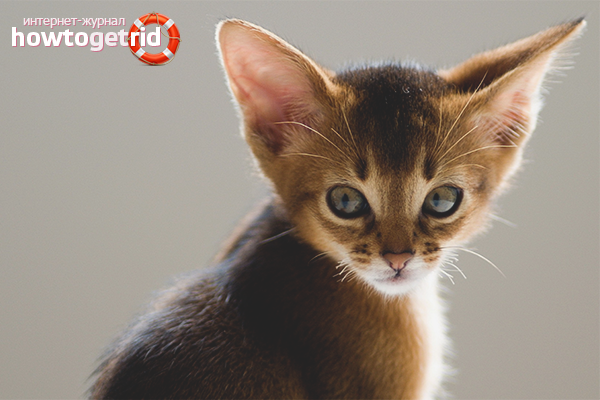
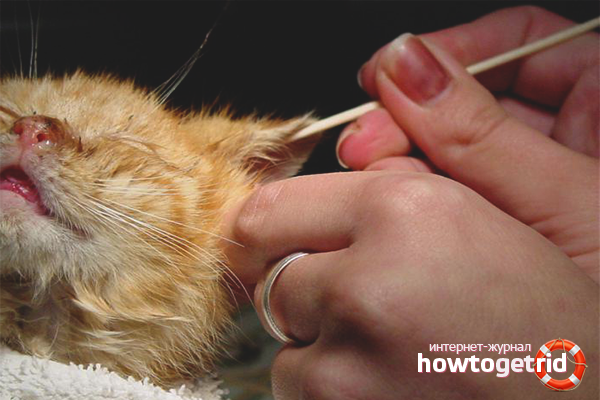
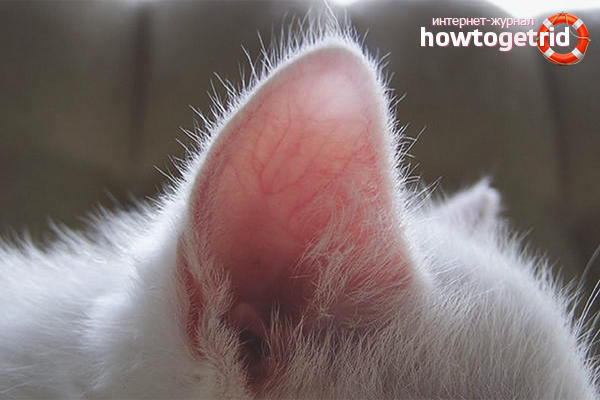
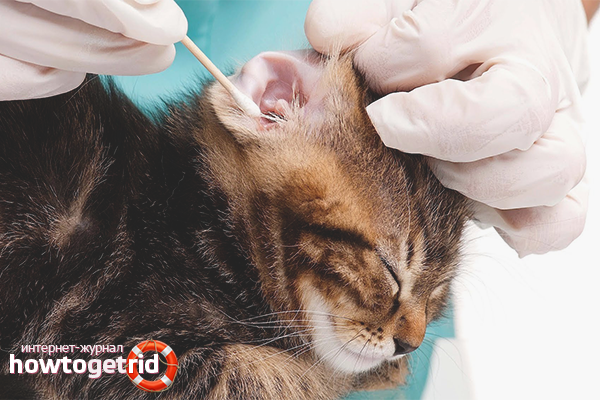



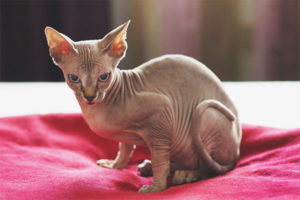
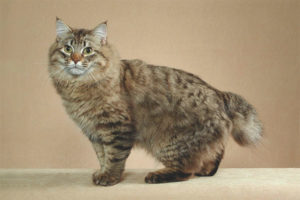
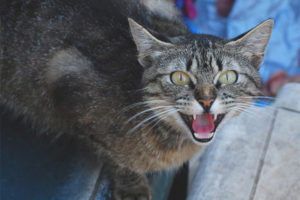
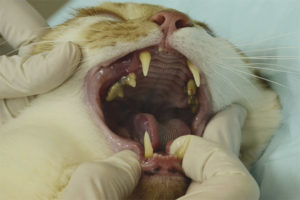
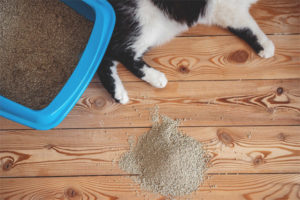
Submit